The Artists
CLAUDE MONET
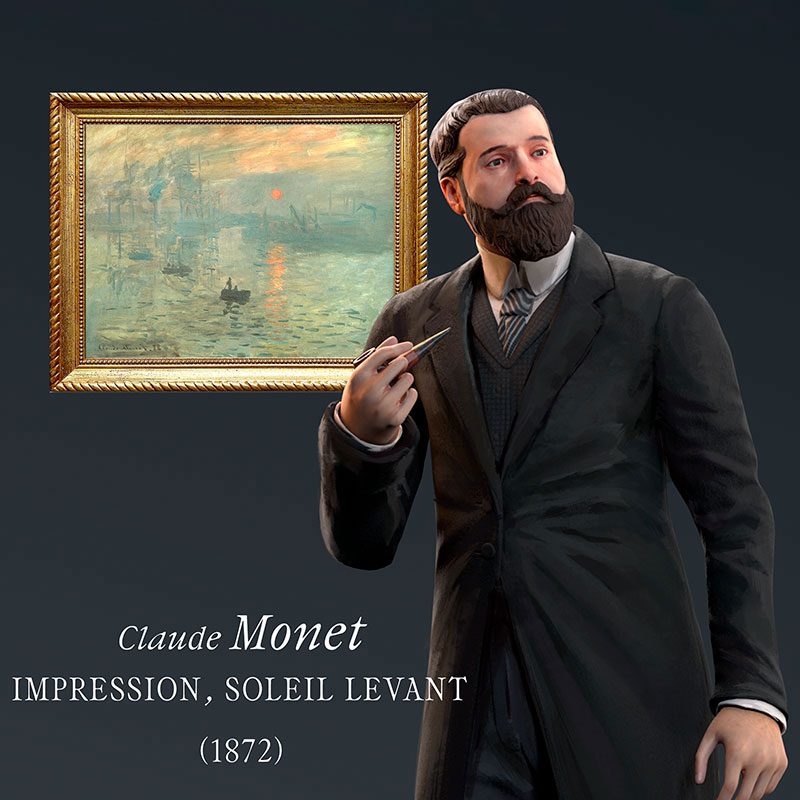
Famous for his Water Lilies, which took inspiration from the water lilies he saw in the pond in his garden at Giverny, Monet favoured plein air painting, which he adopted in his youth. A founding member of the Impressionist group, he worked with his colleagues around Paris and in the Normandy region, to which he remained deeply attached throughout his life.
His Impression, Sunrise, painted in Le Havre, Normandy, is the work that gave its name to the Impressionist movement.
RENOIR
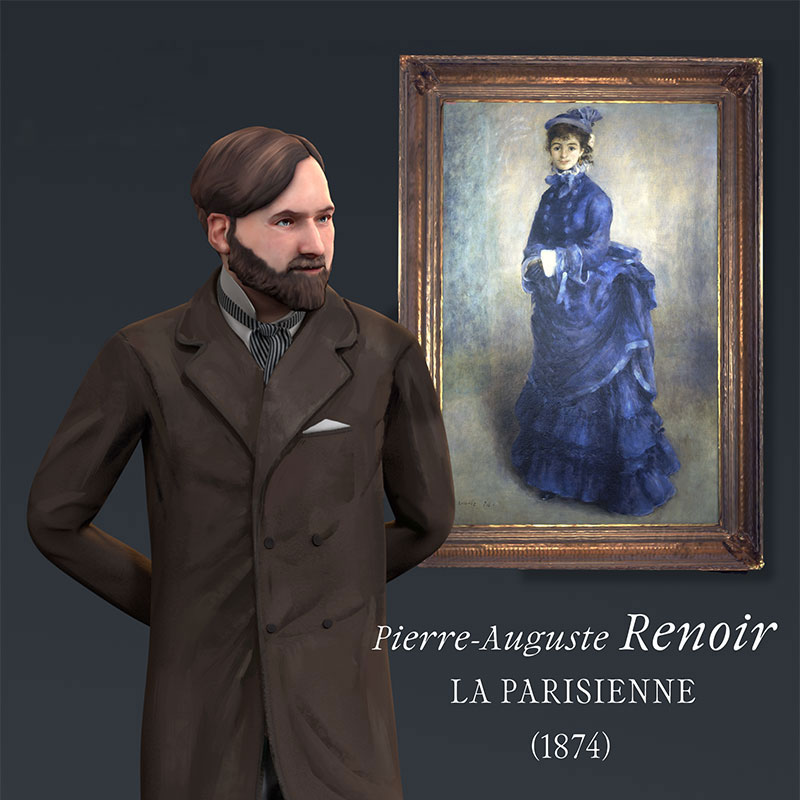
Pierre-Auguste Renoir was one of the artists most closely associated with the first Impressionist exhibition. He was involved in organising the exhibition and undoubtedly decided how it would be displayed. A brilliant and sensitive landscape painter, he was also fascinated by the modern world and portrayed his contemporaries in works that were vibrant with life. His paintingThe Parisian Girl depicts a young actress, Henriette Henriot, dressed in the latest fashion. Renoir captured the vivacity and elegance of this young woman, firmly anchoring her in her time.
DEGAS
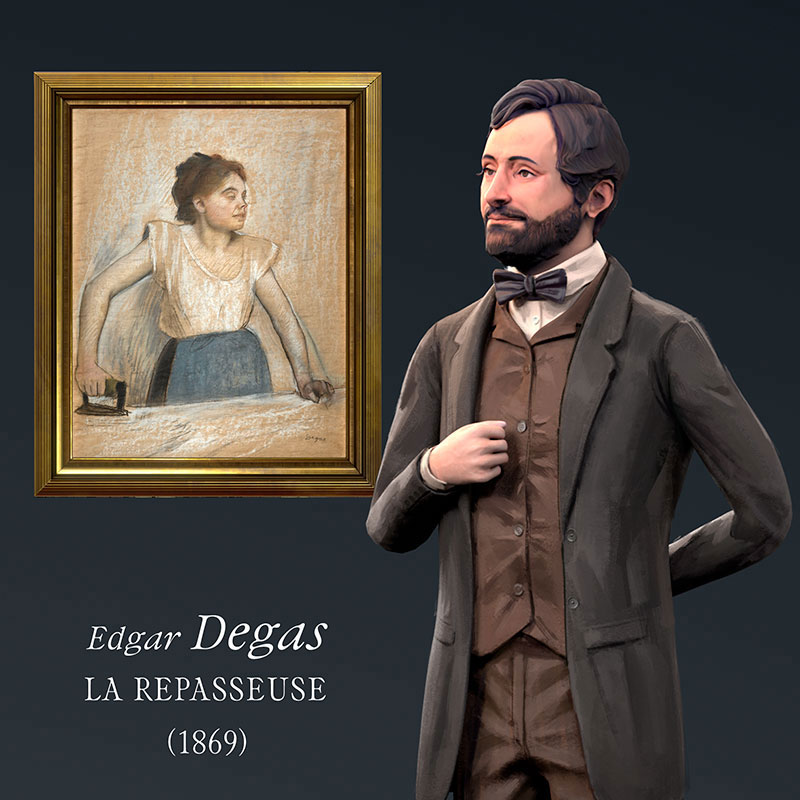
A founding member of the Impressionist group, Degas distinguished himself from his colleagues by his choice of subjects. Rather than painting landscapes, he preferred to depict Parisian life in all its modernity. He painted café interiors and the world of show business, with dancers on stage, rehearsing or resting. He was also interested in working women – milliners or laundresses – focusing on their movements and attitudes.
InThe Laundress, Degas takes a close look at a young woman busily at work: in this case, the young model Emma Dobigny. With a few strokes of charcoal, chalk and pastel, he describes her repetitive movements and conveys her weariness.
MORISOT
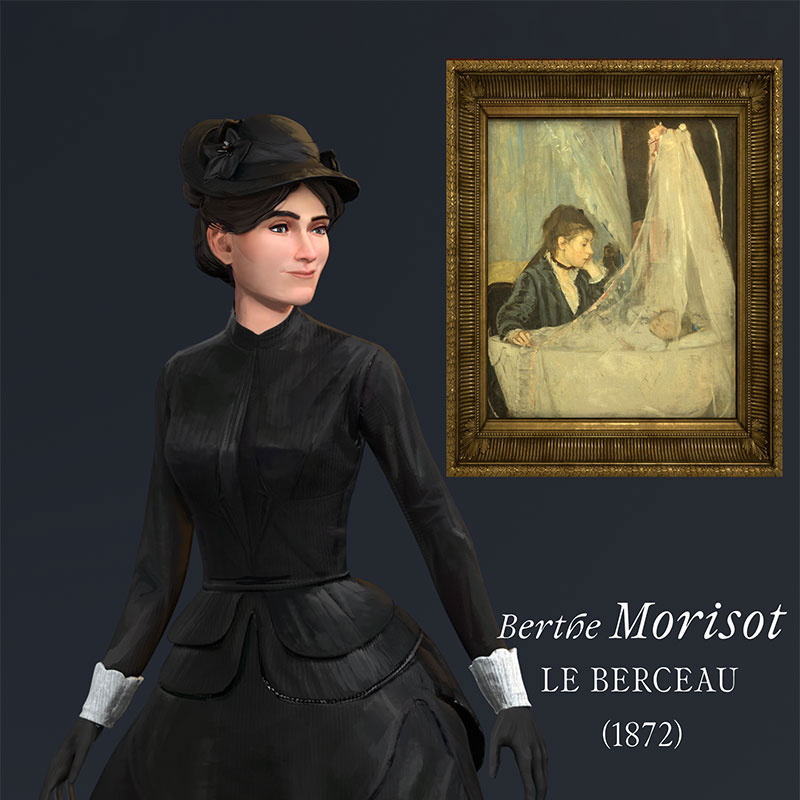
Berthe Morisot was one of the few women in the Impressionist movement; she was also the first to join its exhibitions. Although she came from a middle-class background, Morisot succeeded in establishing herself as a female artist within an avant-garde group, where she depicted remarkable scenes of modern life with aplomb. These were sometimes severely criticised for being too hastily painted, or for showing a sensibility that was then considered, not without contempt, to be ‘feminine’.
Her painting The Cradle depicts her sister Edma – herself a gifted artist who gave up painting after her marriage – tenderly, and perhaps melancholically, watching over the sleep of her daughter Blanche, whose features are barely sketched, glimpsed behind a light veil.
CÉZANNE
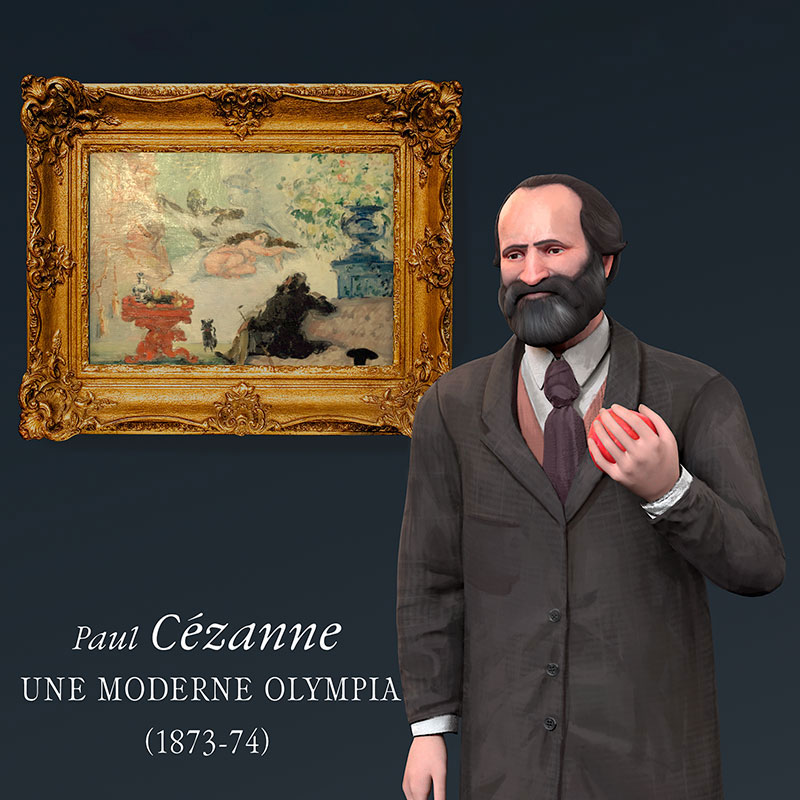
Born in the south of France, Cézanne remained strongly attached throughout his life to the landscapes of his childhood, such as Mount Sainte-Victoire, near his native Aix-en-Provence. In the early 1870s, he spent time in Paris and Auvers-sur-Oise, where he learned plein air painting from Camille Pissarro. Pissarro invited Cézanne to take part in the first Impressionist exhibition.
At the exhibition, Cézanne presented recent works: two landscapes of Auvers, and a genre scene, A Modern Olympia. The sketch was provocative because of its theme – set in a brothel – and its particularly loose brushwork. The painting caused a scandal and came in for heavy criticism.
PISSARO
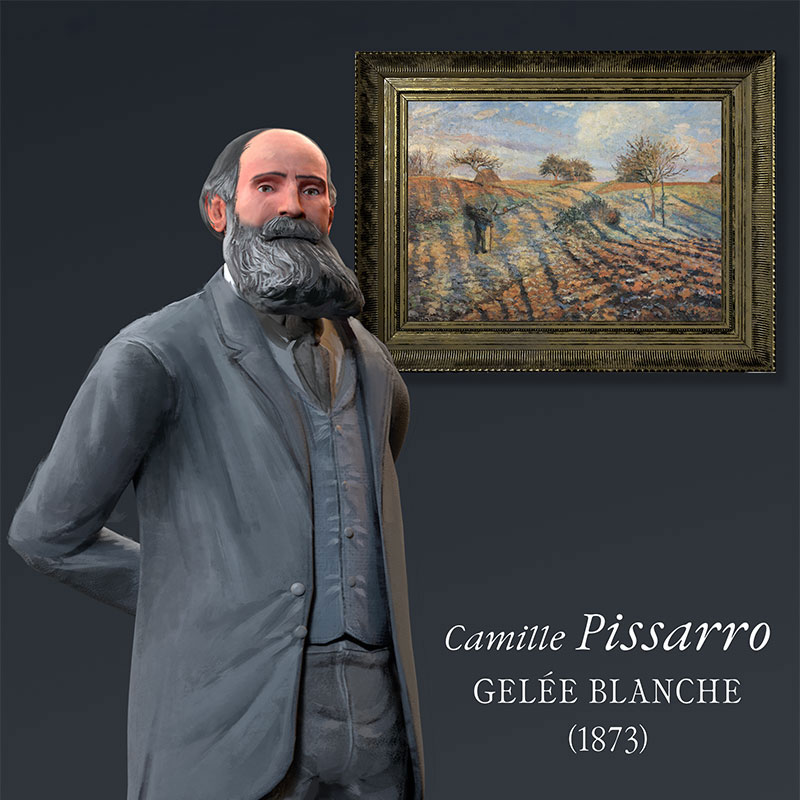
Camille Pissarro was the only Impressionist artist – of whom he was the oldest – to have taken part in all the group’s exhibitions from 1874 to 1886, establishing himself as one of its central figures. In the early 1870s, he encouraged his fellow Impressionists to go out and practice plein air painting, and had a profound influence on Cézanne in particular.
His painting Hoarfrost, done in the countryside around Pontoise, north-west of Paris, shows the artist’s mastery of atmospheric effects: in this case, a winter’s morning, when the cold has hardened the earth, covering it with a veil of frost.





